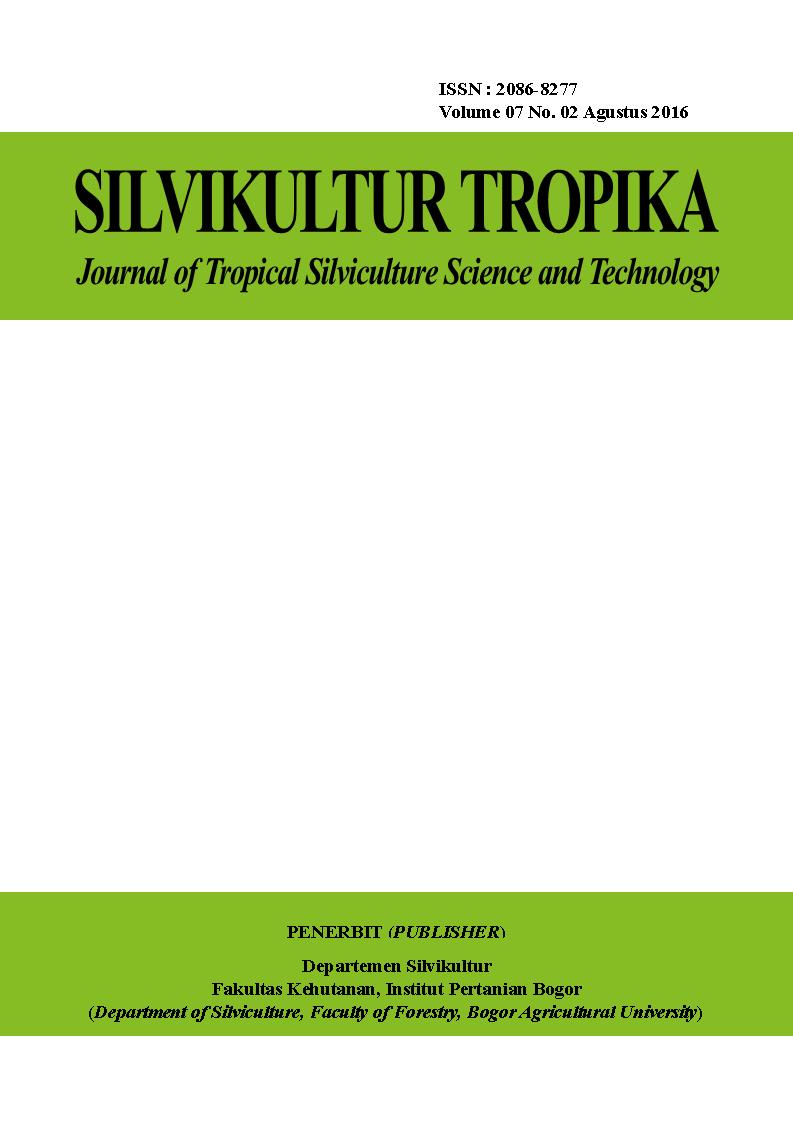The Composition of Vegetation on Post Fire Land in Hutan Pendidikan Gunung Walat KOMPOSISI VEGETASI PADA LAHAN BEKAS TERBAKAR DI HUTAN PENDIDIKAN GUNUNG WALAT
Abstract
The resiliency of the ex-burnt forest area will following the forest succession stages and resulted to secondary forest. This study was conducted to identified: (1) type and cause of forest fire on September 2012 at Hutan Pendidikan Gunung Walat (HPGW), (2) differences of the vegetation composition of stands, (3) undergrowth succession, as well as (4) differences of soil chemical properties in the ex-burnt and unburnt stands. Fire in HPGW was mainly due to the careless use of fire by local communities when they used fire to burn thatch on their land. Highest index of similarity is found on tree stage at all plots, while the most significant differences found on undergrowth stage. This may related to the vulnerability of the undergrowth to evey changes that occur, one of which is the change on soil chemical properties. Generally, the soil chemical properties at 11th month after fire is better than 6th month after fire.
Key word: composition of vegetation, forest fire, soil chemical properties, succession, undergrowth










